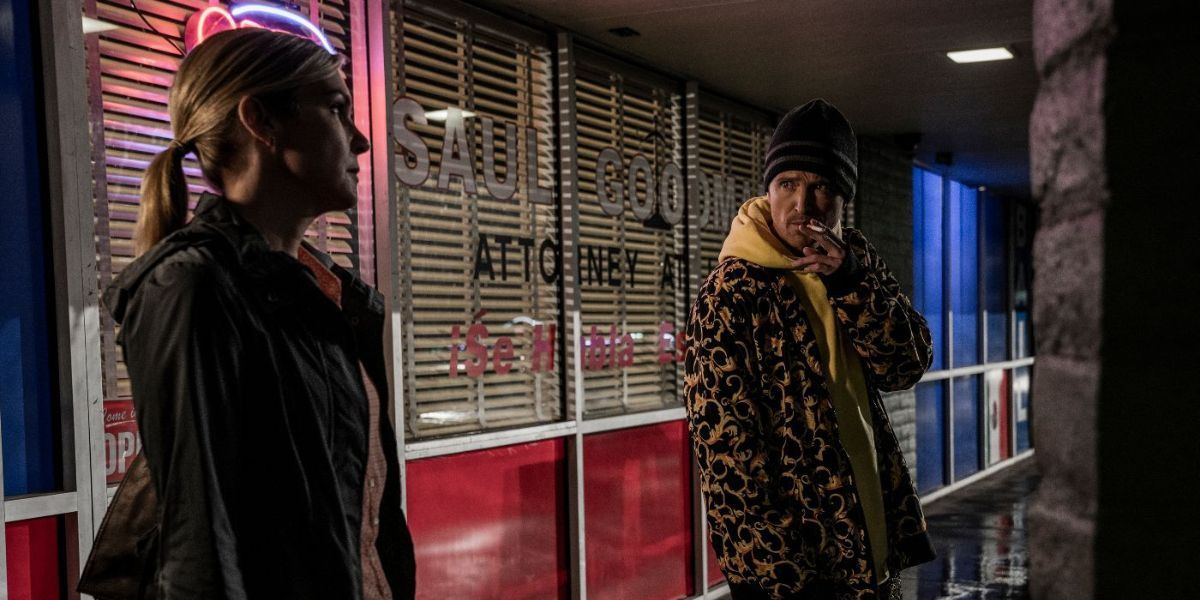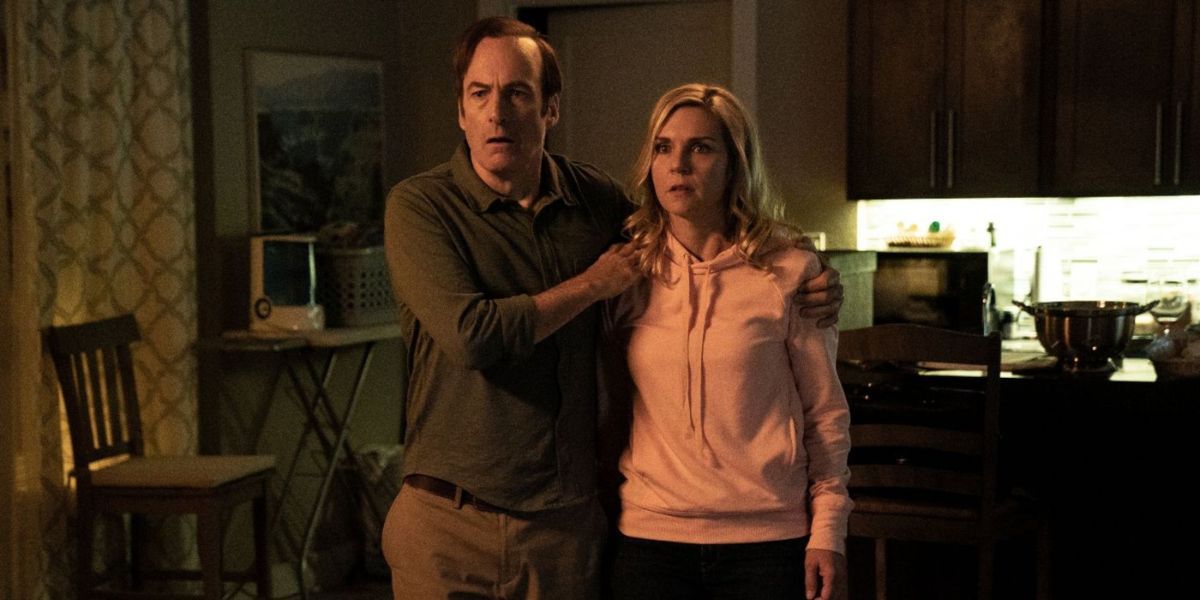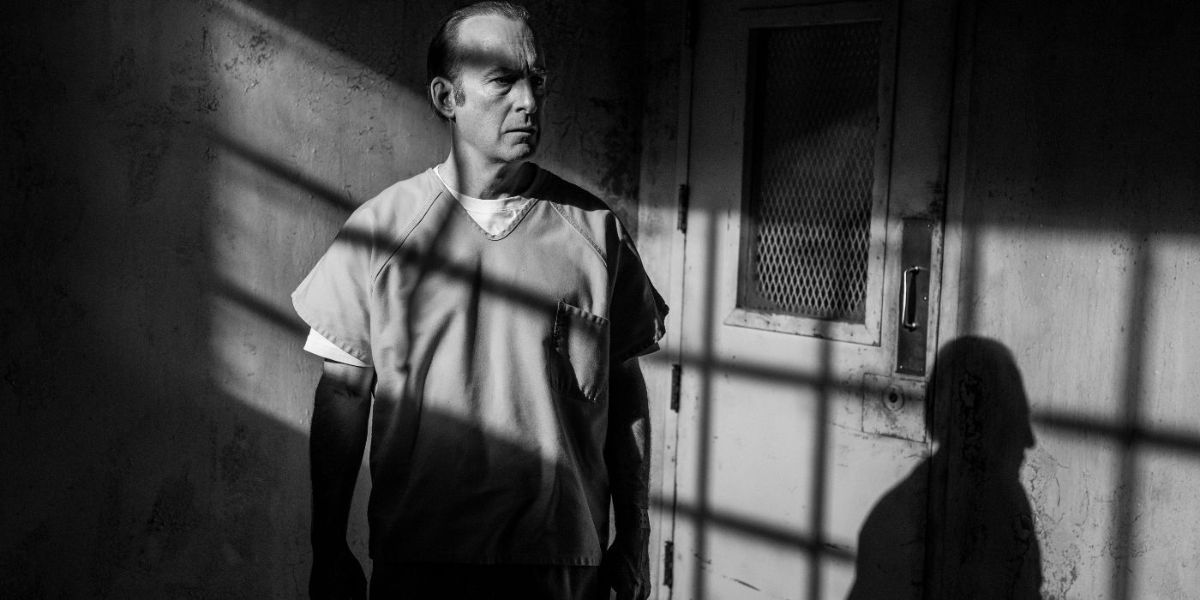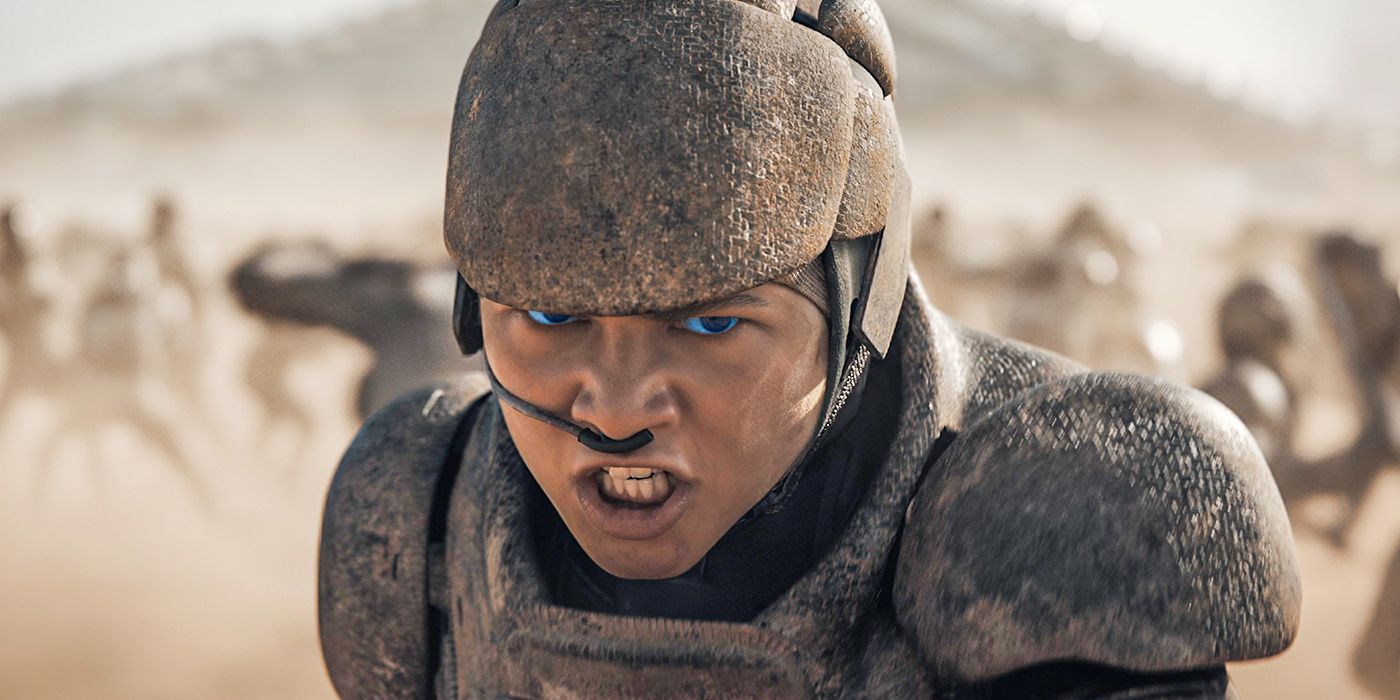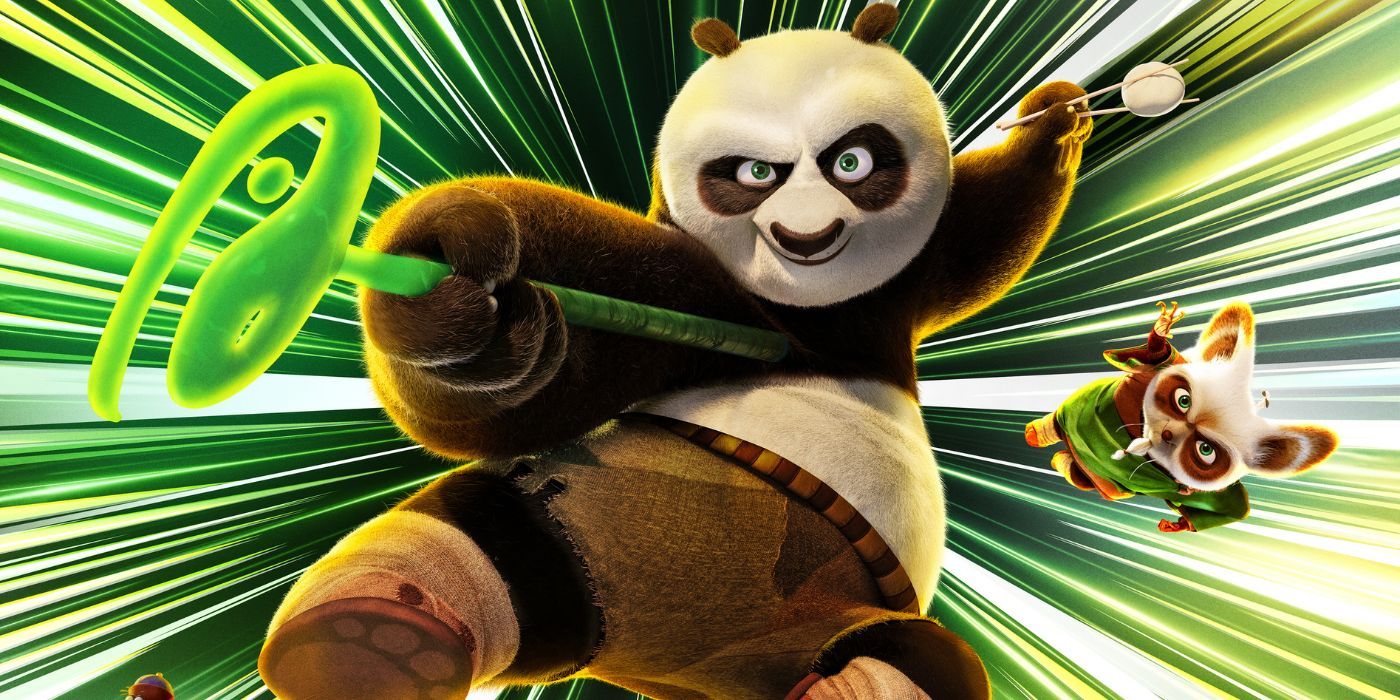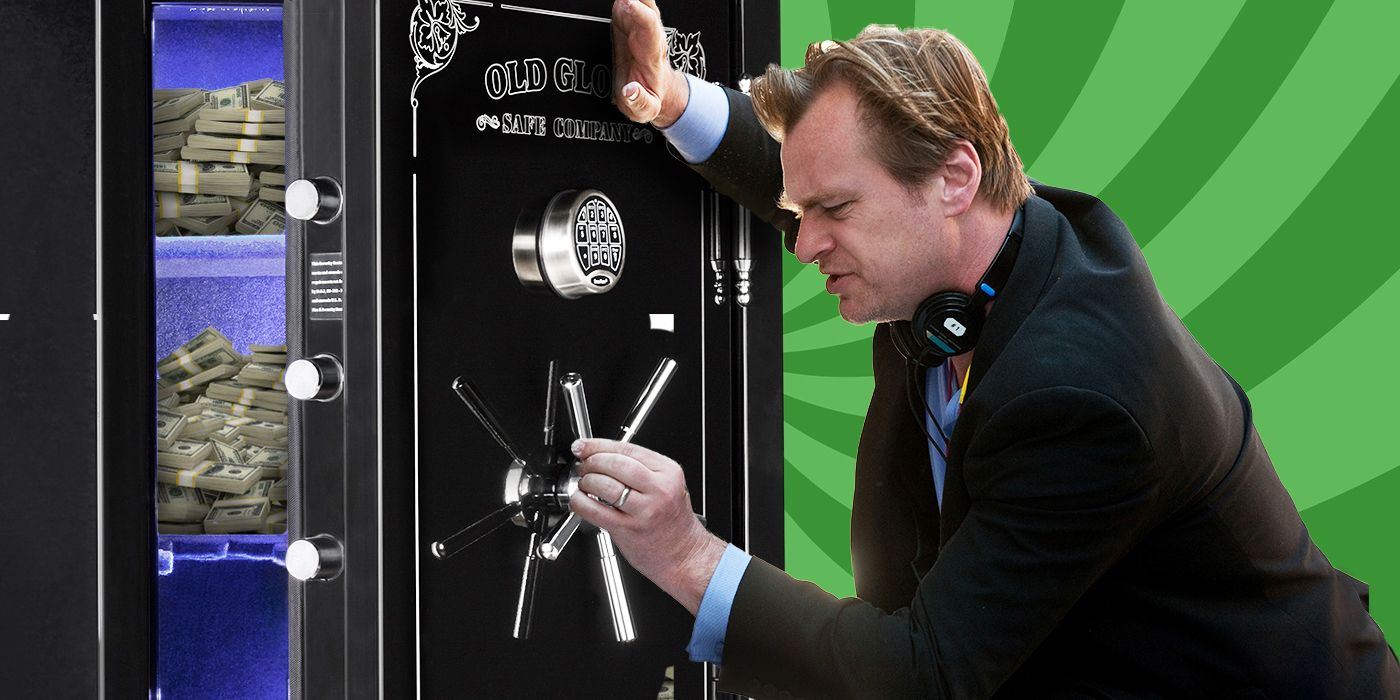It was hard not to be skeptical of Better Call Saul, at least at first: a prequel/spinoff series of one of the most acclaimed television shows of all time, centering on the early days of a secondary character who had often been delegated to comic relief? Sure, Breaking Bad proved that Vince Gilligan, Peter Gould, their writing crew, and Bob Odenkirk had tremendous talent, but there still was plenty of room to go wrong. Prequels, sequels, and spinoffs too often feel like cash-grabs that count on the investment of fans in order to sell an inferior product. Thankfully, Better Call Saul far surpassed expectations of it merely being a piece of Breaking Bad-related content and made itself an equally esteemed piece of serialized storytelling.
Better Call Saul not only lives up honorably to the formidable reputation of its illustrious predecessor, but surpasses it. It checks all the boxes: a genuinely gripping backstory that crafts an emotionally complex character out of Jimmy “Saul Goodman” McGill? Check. An exploration into the backstory of the criminal world built in Breaking Bad? Check. The introduction of iconic, well-rounded characters unique to the show? Check. Writing, acting, production, and direction no less impressive than that in the original series? Check. The evidence doesn’t lie—Better Call Saul is everything you’d want a prequel series to be.
‘Better Call Saul’ Gives Saul a Morally Complex Origin Story
The first time we see Saul Goodman (Odenkirk) in Breaking Bad is on television in Jesse Pinkman’s (Aaron Paul) apartment, starring in a hilariously gaudy late-night commercial for his shady legal services, and for a good chunk of Breaking Bad this is how we’ll continue to see him. He’s capital E eccentric, a bit sleazy, commanding an uptight, high-strung presence that uses Odenkirk’s comedic background to deliver memorable motor-mouthed quips (« If I ever get anal polyps, at least I’ll know what to name them! »). The genius of Better Call Saul is taking this comic character and finding in his backstory a morally complex character with a tragic fall from grace.
You can spend the first few episodes of Better Call Saul searching Jimmy McGill for traces of Saul Goodman. They’re mostly all there—his rapid fire pop culture references, his natural charisma, his gift for grifting and hustling—but what we’re looking at is still undeniably a different character. The Jimmy we see in Better Call Saul is kind-hearted (he cares for his reclusive, mentally-unstable brother — and major antagonist — Chuck (Michael McKean)), empathetic (he barters for the lives of a pair of hustling twins in Episode 2), and relatively law-abiding (he’s reluctant to scam money out of a couple charged with embezzlement). The more we get to know Jimmy, and the more we learn to love him, the broader the gap between him and the Saul Goodman persona he later adopts seems. Jimmy’s a sweet guy. A little misguided, perhaps, but sweet.
Still, through a patiently-paced plot that slowly intertwines Jimmy with the criminal underworld that he later thrives in, Better Call Saul believably bridges the gap of morality that exists between Jimmy and Saul. At the start of Better Call Saul, he’s a hustling, aspiring public defender with dreams of being a great lawyer like his brother. He’s got the talent, knowledge, and passion, but due to a troubled past (« he defecated through a sunroof!« ) and Chuck’s spite, his path towards legitimate legal practice is repeatedly blocked, forcing him to seek other routes to success.
Still, it’s never too hard to believe that Jimmy could become Saul. From the start, he enjoys conning. He’s good at it. Because of the incessant rejection and scorn from Chuck, Jimmy increasingly relies upon these cons. It’s hard not to feel bad for Jimmy, even as he does morally reprehensible things. Through repeated emotional manipulation, Chuck pushes Jimmy into moral ambiguity. His unwavering judgment makes his expectations come true.
Most crucial to making Jimmy’s descent into Saul Goodman believable is the patience with which Better Call Saul introduces Jimmy to the criminal world. It happens slowly over the course of six seasons. A seed is placed in Season 1 when Jimmy meets Tuco Salamanca (Raymond Cruz) and Nacho Varga (Michael Mando). Later, in Season 5, Nacho remembers Jimmy’s legal skills and handpicks him to help Lalo (Tony Dalton) with some legal troubles, sprouting the seed. There’s no turning back. Lalo Salamanca isn’t the type of guy one can walk away from, and Jimmy’s life is forever changed as he’s pulled into the violent, gruesome world of drug cartels.
Better Call Saul‘s final season ties the two threads of Jimmy’s decay together, connecting his love of the con with his criminal involvement. After an elaborate and spiteful scheme to get Howard Hamlin (Patrick Fabian) disbarred leads to the jaw-dropping murder of Howard at the hands of Lalo, the transformation is complete. This serves as the pivotal moment that Jimmy fully recognizes the consequences of his choices. Unlike Walt, who is too deluded in his hubris to ever fully take responsibility for the irreparable harm he’s caused, Jimmy is able to see the truth. He sees the fallout he’s caused, and he can only recoil in horror.
And with that sudden flash forward into the future following Jimmy’s breakup with Kim (Rhea Seehorn) putting him into the skin of the Saul Goodman we know from Breaking Bad, Better Call Saul finally pulls off its magic trick of making a morally-complicated and believable transformation.
The World Built in ‘Breaking Bad’ Is Widely Expanded in ‘Better Call Saul’
In Better Call Saul, running parallel to Jimmy’s moral decay is an expanded look at the world of Albuquerque meth kingpins first introduced in Breaking Bad. Better Call Saul takes the opportunity to dive further into crucial plot points from the original series. Gus Fring’s (Giancarlo Esposito) bloody feud with the Salamanca family is given more background. We see Gus’s Machiavellian rise to power and his elaborate plans to build an underground meth cooking lab coming to fruition. Though Breaking Bad only had the time to offer glimpses of Gus’s history, Better Call Saul fleshes out the details masterfully.
Meanwhile, everybody’s favorite hitman/grandpa Mike Ehrmantraut (Jonathan Banks) is given a tragic backstory that elaborates on his transition from ex-cop to cartel contract killer. Morally compromised after killing the crooked cops who murdered his son before Better Call Saul begins, Mike finds easy work as a « security consultant » for Gus. Frequently meeting Jimmy at his job at the courthouse parking lot, he also serves as a vital connection between « Saul » and Gus.
Through the expansion of these storylines, a more detailed and complicated characterization for Mike, Gus, and the Salamancas is drawn. Gus’s ruthlessness is shown in greater detail, but so are his previously unseen bouts of paranoia. Mike is shown to be level-headed and grounded in principle, but Better Call Saul shows a more morally-uncertain man than we saw in Breaking Bad. It isn’t just about explaining how things became what they are, it’s about better understanding these characters, giving them more room to breathe and grow.
It’s also worth mentioning the plethora of Easter eggs referencing Breaking Bad, including some late-series appearances by Jesse and Walt (Bryan Cranston). Don’t see the Walt and Jesse cameos late in Season 6 as mere fan service. Their appearances are crucial to Better Call Saul‘s impactful finale, using dialogue changes between Walt/Jimmy and Jesse/Kim to give succinct emotional detail to Better Call Saul‘s two lead characters.
Its New Characters Are Largely What Makes ‘Better Call Saul’ So Excellent
Simply showing how Breaking Bad characters became who they are wouldn’t be enough to turn Better Call Saul into an outright masterpiece. It needed something new, a story we could follow that doesn’t have a predetermined end. Breaking Bad fans already know Mike, Gus, and most of the Salamancas die untimely deaths, so the introduction of new primary characters is a crucial aspect of Better Call Saul.
Perhaps most crucial is Kim Wexler, Jimmy’s best friend, romantic partner, partner-in-crime, and voice of reason, who is as compelling a character as any in the Breaking Bad universe. The shining light of Better Call Saul, Kim is the epitome of the series’ interest in the grey area of morality. Torn between wanting to do the right thing and enjoying being in on the con, Kim initially serves as a moral compass, like an angel on Jimmy’s shoulder who tries to steer him towards the light.
Even more than that, she’s a well-rounded protagonist in her own right. She’s the epitome of a good lawyer. She cares about her clients (not just their money), is a particularly brilliant legal mind, and has the humanism and ambition to set big goals for herself. Yet, she’s eventually drawn into Jimmy’s schemes and becomes his coconspirator. She’s allured by—even addicted to—the thrill of it. Once blood is shed, though, she’s brought back to earth and falls into a spiral of shame. She’s not a bad person. She never was. Her descent into immorality is abruptly cut short the moment Howard dies.
And never can we forget Nacho Varga, a drug-dealing henchman who quickly becomes Better Call Saul‘s heart (and one of the most beloved characters). Stuck at a crossroads of continuing on the path of crime that he had started down and fighting against it in order to keep his father from becoming inadvertently involved, Nacho has the redemptive character arc in the series.
Mando’s career-defining performance helps sell Nacho as a man who was never as cruel as his accomplices. Here is a guy who’s just in way over his head. Getting out is all too complicated, and as he staggers between alliances in the final season, his pure-hearted intention of protecting his family at all costs is made perfectly clear.
Better Call Saul excels at creating morally ambiguous characters who practically leap off the screen. Kim, Nacho—hell, even Chuck and Howard—make for some of the best damn characters on television.
‘Better Call Saul’ Is the Rare Prequel That Equals—and Surpasses—Its Predecessor
What’s most impressive about Better Call Saul is how well it’s able to stand on its own. You don’t need to love Breaking Bad. You really don’t even need to have seen it to appreciate its prequel. Jimmy McGill’s moral decay is a fascinating tragedy on its own, one even more heartbreaking and tragic than Walter White’s fall from power. Surprisingly, even at his most condemnable, Jimmy is still likable, and that’s because Better Call Saul takes its time in plotting his transformation while keeping him somebody worth empathizing with.
On a technical level, Better Call Saul is virtually unrivaled by the vast majority of TV programs. The signature cinematic aesthetic that helped make Breaking Bad is used to its fullest extent here. The writing, acting, and direction are top-tier, and the quality of the show only improves as it progresses. Episodes like « Bagman, » « Chicanery, » and « Plan and Execution » are destined for the lists of the greatest episodes ever aired.
In the vain of The Godfather II, Better Call Saul also plays the dual role of sequel and prequel. Turns out all those enigmatic black-and-white flashes forward end up amounting to something spectacular: a four-episode finale arc that leads into Jimmy’s redemption. These scenes aren’t just a coda to punctuate the end of the Breaking Bad narrative, this is the poetic end to the story of Saul Goodman. And by the time the last episodes roll around, there’s so much more at stake than one would have thought upon the series premiere. Six seasons spent with Jimmy make us understand: he’s a thoroughly captivating and complicated character who, regardless of his flaws, is the true protagonist of his lengthy story.
Better Call Saul pulled off an impossible scheme: it took a secondary character from an iconic series and built for him an elaborate and thematically rich backstory, creating the coveted perfect prequel. For once, all eyes are on Saul Goodman. He’s the star of the show, just as he deserves to be.
